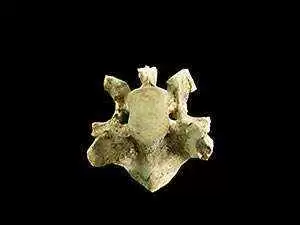Celiac.com 02/20/2009 - Doctors are recommending screening for bone density in children with newly diagnosed celiac disease.
A team of researchers recently set out to evaluate children with celiac disease for bone deficits in spine (SP) and whole body (WB) bone mineral content (BMC) at time of diagnosis, and to evaluate whether such deficits are associated with deviations in growth and body composition. Additionally, the team sought to assess the effect of histological grade on BMC.
Celiac.com Sponsor (A12):
The research team was made up of doctors Muralidhar Jatla, Zemel, S. Babette, Patricia Bierly, and Ritu Verma associated with the Department of Pediatrics, Division of Gastroenterology and Nutrition, Children's Hospital of Philadelphia, University of Pennsylvania School of Medicine, Philadelphia
Their study was supported by the Nutrition Center at the Children's Hospital of Philadelphia and the Clinical and Translational Research Center from Clinical and Translational Science Award UL1-RR0241340. Their findings were reported in a recent issue of Gastroenterology.
The team conducted a retrospective study that compared the results of children who had undergone a dual energy x-ray absorptiometry scan at the time of their celiac disease diagnosis against a healthy reference sample matched for age, race and geographic region in the United States. All celiac disease diagnosis occurred between October 1, 2003, and June 15, 2006.
To evaluate differences between the celiac disease and the control group, the research team expressed SP and WB BMC as sex-specific z scores relative to age and relative to height. They performed Pearson correlation, t tests, and analysis of variance to assess predictors of BMC.
They evaluated a total of forty-four children with celiac disease and compared them with 338 healthy controls. The celiac children averaged 10.6 ± 3.4 years of age, were 77% female, and 96% white. The children with celiac disease were shorter than their healthy counterparts of similar age, sex and region.
The children with celiac disease also showed significantly lower SP and WB BMC for age z scores compared with controls. The children with celiac showed significant deficits in WB BMC, even once the figures were adjusted for height. Low SP and WB BMC were associated with advanced histological grade in celiac disease. Low body mass index was associated with low WB BMC in celiac disease.
The research team concluded that screening for low bone mineral content may benefit children who are newly diagnosed with celiac disease, as those with low body mass index and those with advanced histological damage (Marsh grade IIIc) face an elevated risk of osteopenia.






Recommended Comments
There are no comments to display.